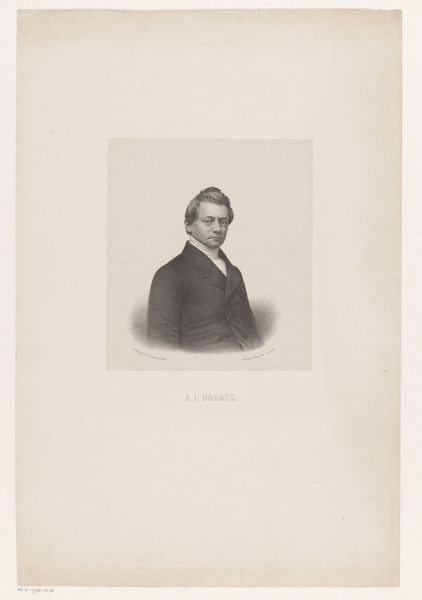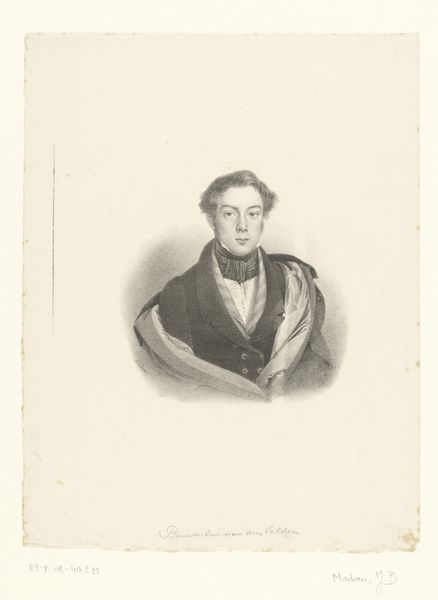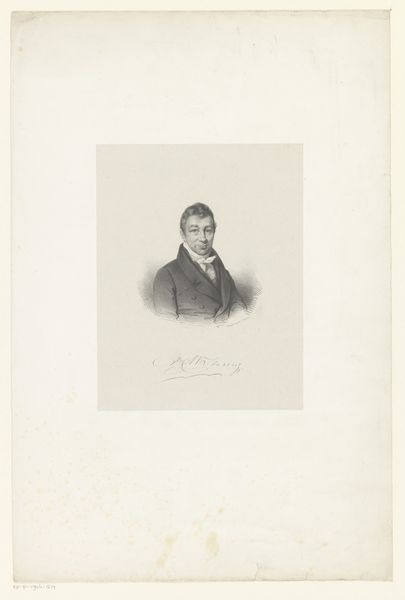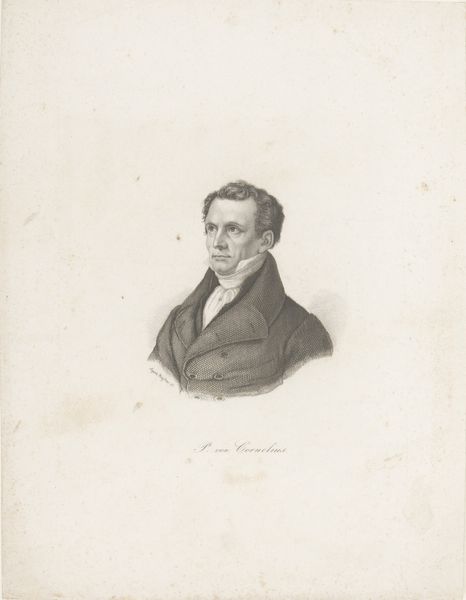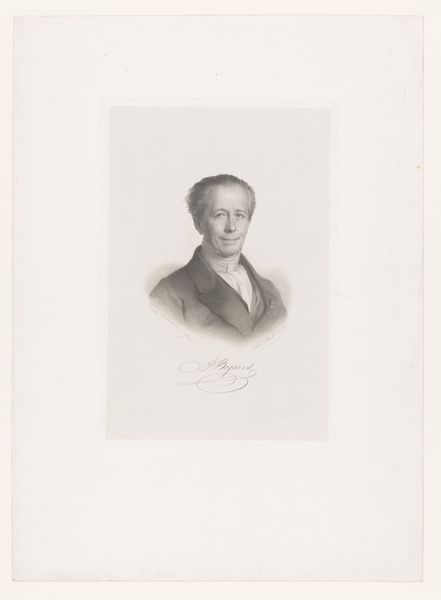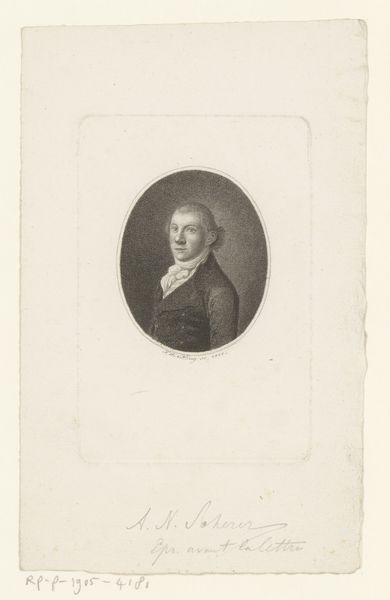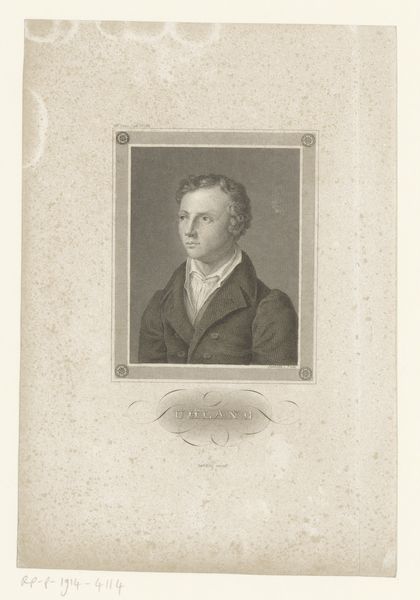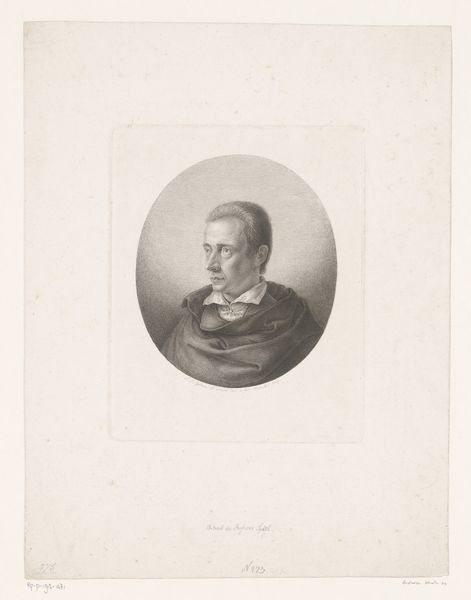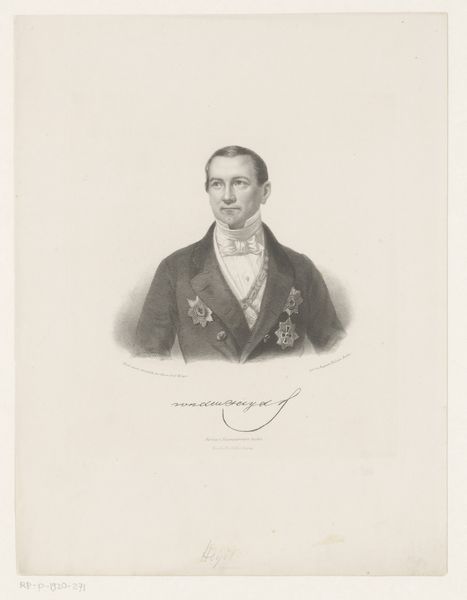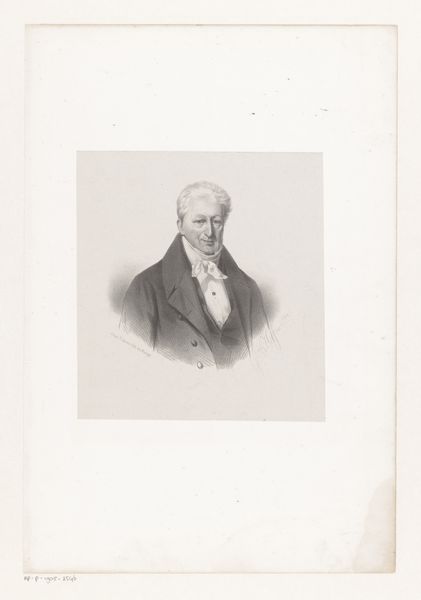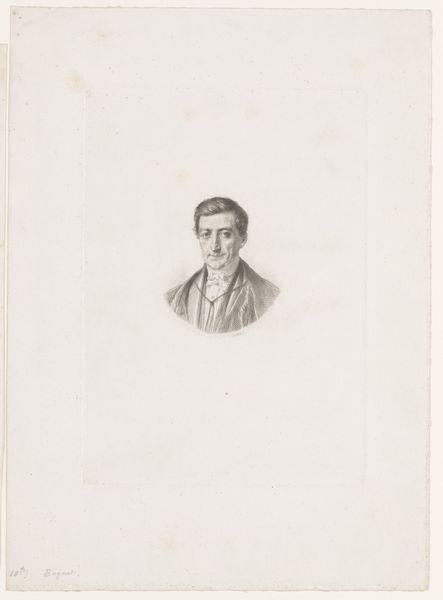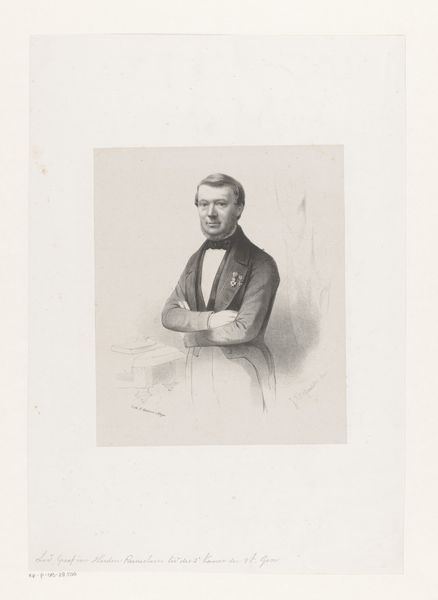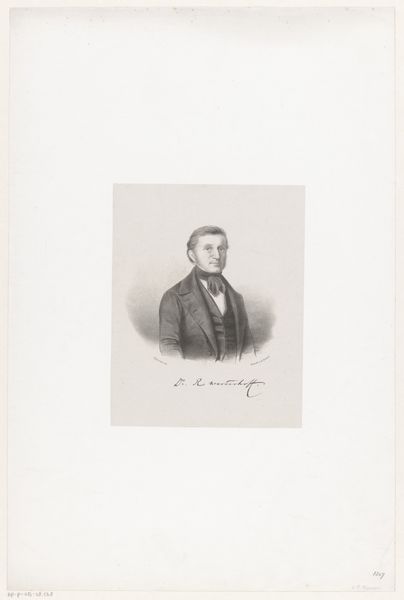
drawing, pencil
#
portrait
#
pencil drawn
#
drawing
#
pencil sketch
#
pencil drawing
#
romanticism
#
pencil
#
pencil work
Dimensions: height 489 mm, width 319 mm
Copyright: Rijks Museum: Open Domain
Jean Adolphe Papin made this portrait of G. Hauck using lithography, a printmaking process where an image is drawn on stone or metal and then printed. Lithography emerged in the 19th century as a relatively inexpensive medium for producing images, particularly for commercial purposes. It allowed for the mass production of prints, fueling the spread of visual culture. The portrait’s tones, ranging from light grey to black, emphasize the subject’s facial features and clothing details. You can see the layering, the subtle hatching and cross-hatching, all the evidence of Papin’s deliberate process. It demonstrates the artist's skillful manipulation of the medium. The choice of lithography speaks to a moment when art production started to merge with industrial processes, influencing the kind of aesthetic value that the work can achieve. It underscores the importance of considering materials, making, and context in understanding the full meaning of an artwork. It challenges traditional distinctions between fine art and craft.
Comments
No comments
Be the first to comment and join the conversation on the ultimate creative platform.
